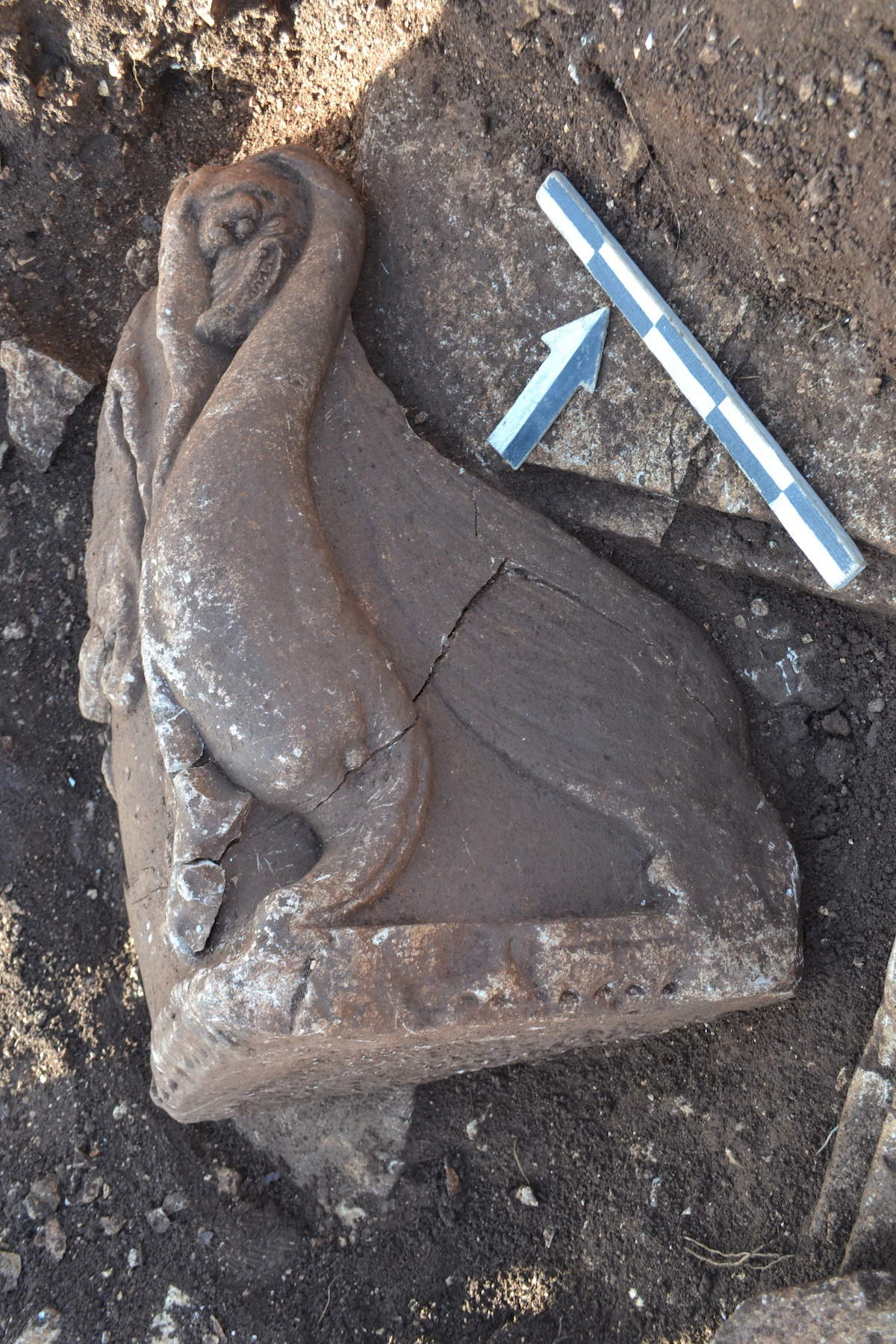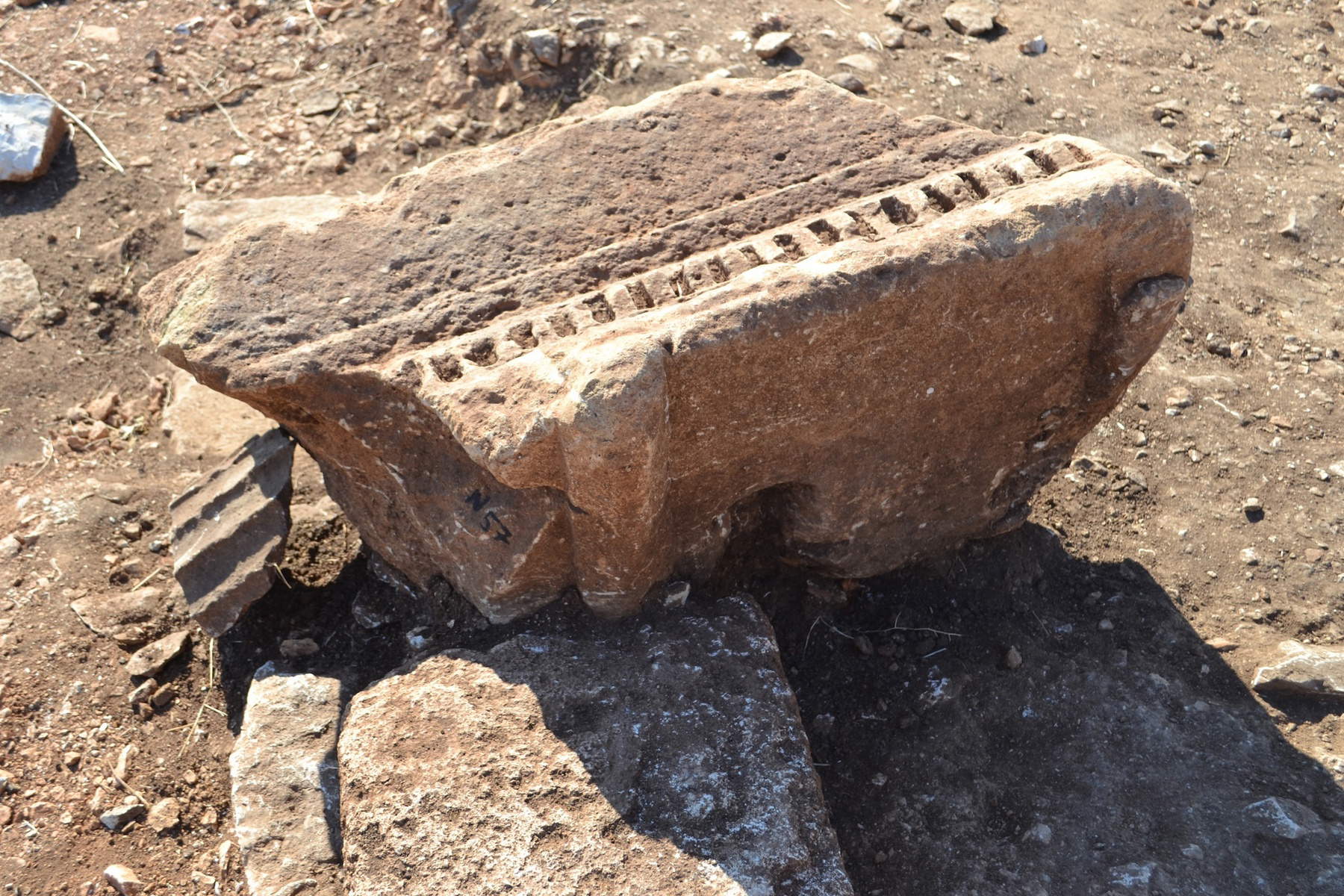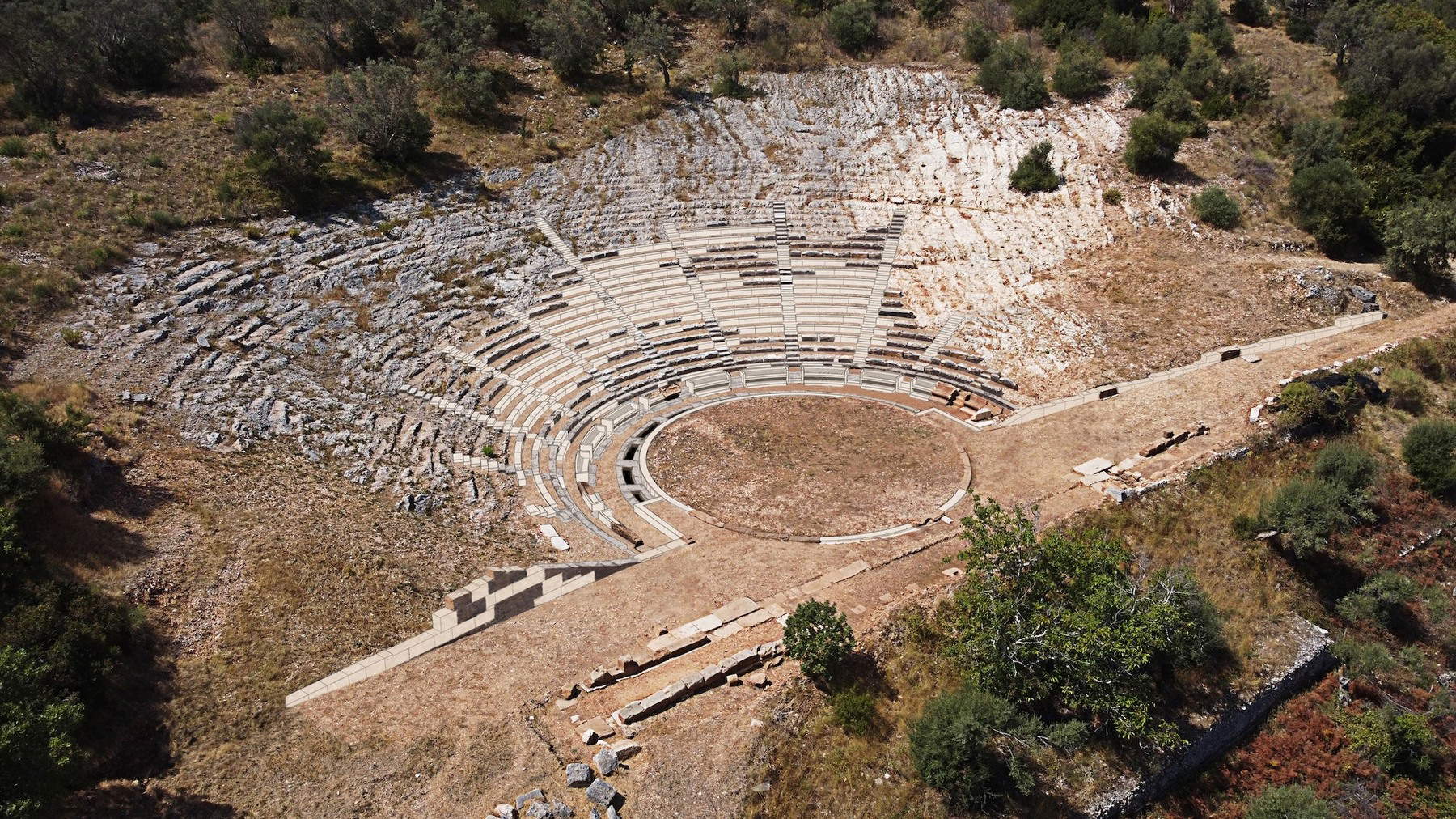In the heart of the island of Lefkada, a major archaeological discovery has unearthed one of the most important monuments ofancient Greece: the theater of Lefkada. This theater, the first in the Ionian Islands, has been hidden for centuries under olive groves and modern buildings, but it has finally found its precise location thanks to a series of excavations that have revealed the magnificence of a site that once dominated the city. The discovery not only shed new light on Lefkada’s history but also helped rediscover its cultural and political importance in antiquity.
Founded by the Corinthians before the end of the 7th century B.C., ancient Lefkada was a powerful city-state that, thanks to its strategic location on the main sea routes, established itself as one of the region’s economic and cultural powers. Located at the northeastern tip of the island, the city enjoyed privileged access to the sea, which facilitated trade and communication with the rest of the Greek world. The city’s location, with its well-protected harbor, allowed prosperity that was also reflected in its monuments, including, of course, the theater.

The rediscovery of the theater of Lefkada was by no means simple. Until 2015, there was little and fragmentary information about the site, dating back to past research, including trials by W. Dörpfeld and E. Kruger in 1901. In those years, some test sections were made, but these were covered up and forgotten over time. It was only in 1997 that, thanks to a careful analysis of the geomorphology of the area and the surface remains, the site could be located again. Beginning in 2015, under the direction of Olympia Vikatou, systematic excavations took hold, supported by the Municipality of Lefkada and the DIAZOMA association. Hard work that, despite logistical and environmental difficulties, has finally allowed a site of inestimable historical value to be unearthed.
The actual excavations began in 2017 by the Superintendence for Antiquities of Aetoloakarnania and Lefkada, thanks to funding from the Region of the Ionian Islands and the Municipality of Lefkada, with the goal of recovering the large theater structure that dominated the ancient city. After five periods of excavation, the remains of an imposing cavea, a vast orchestra, and a number of other architectural elements emerged, including the parodoi (side corridors), the retaining wall, and part of the stage. The work was not easy: in addition to the presence of centuries-old olive groves that had to be removed, significant earthworks and the demolition of modern buildings that had encroached on the area were required. Research uncovered much of the cavea, which was identified as 12 grandstands arranged on 13 steps each. The capacity of the theater, initially thought to be about 3,500 spectators, could reach up to 10,000-11,000 people with the expansion of the structure, including the epitheater.
The theater of Lefkada is oriented northeast/southwest, with a cavea spanning 24 rows of seats. The lower part of the cavea, which has suffered less damage over time, has better preserved the stone benches and steps, allowing archaeologists to reconstruct the theater’s structure in detail. The orchestra, partially excavated in the rock, is circular in shape with a diameter of about 16.65 meters, and is surrounded by a stone frame that features ornaments in a wavy style. Another fascinating feature is the discovery of three stone thrones, decorated with motifs of lions, dolphins, birds and mermaids, suggesting the importance of the theater and its spectators, probably representatives of the city’s ruling class.
The theater of Lefkada, unfortunately, is not exempt from damage due to the wear and tear of time and human intervention. Agricultural activities, such as the cultivation of olive trees, have had a negative impact on the state of preservation of the structure, especially in the upper part of the cavea. However, despite the difficulties, the monument has been carefully studied and restoration work has been planned that should ensure its preservation for future generations. In 2020, Culture Minister Lina Mendoni visited the site, promoting a restoration plan that, if approved, will allow the theater to be included in a co-financing program. Already completed the preservation study, the site is ready to be recovered and restored, bringing the theater to a new splendor.


The importance of this discovery is not only limited to the archaeological value of the site, but also has cultural and tourism implications for the island of Lefkada. Due to its scenic location, the theater offers a unique opportunity to enhance the historical heritage of the area and attract visitors. In this context, the theater becomes a landmark not only for archaeological enthusiasts, but also for tourists who wish to learn about the history and culture of the Ionian Islands. Collaboration between local authorities, the Ministry of Culture and cultural associations, such as DIAZOMA, has made possible the recovery and enhancement of this extraordinary site, which, once restored, can become a center of attraction for the international public.
The rediscovery of the Lefkada theater is not only a victory for archaeologists, but also represents a return to the past, an opportunity to better understand the life and culture of one of the most important cities of Greek antiquity.

 |
| Greece, unearthed ancient theater of Lefkada, the first in the Ionian islands |
Warning: the translation into English of the original Italian article was created using automatic tools. We undertake to review all articles, but we do not guarantee the total absence of inaccuracies in the translation due to the program. You can find the original by clicking on the ITA button. If you find any mistake,please contact us.